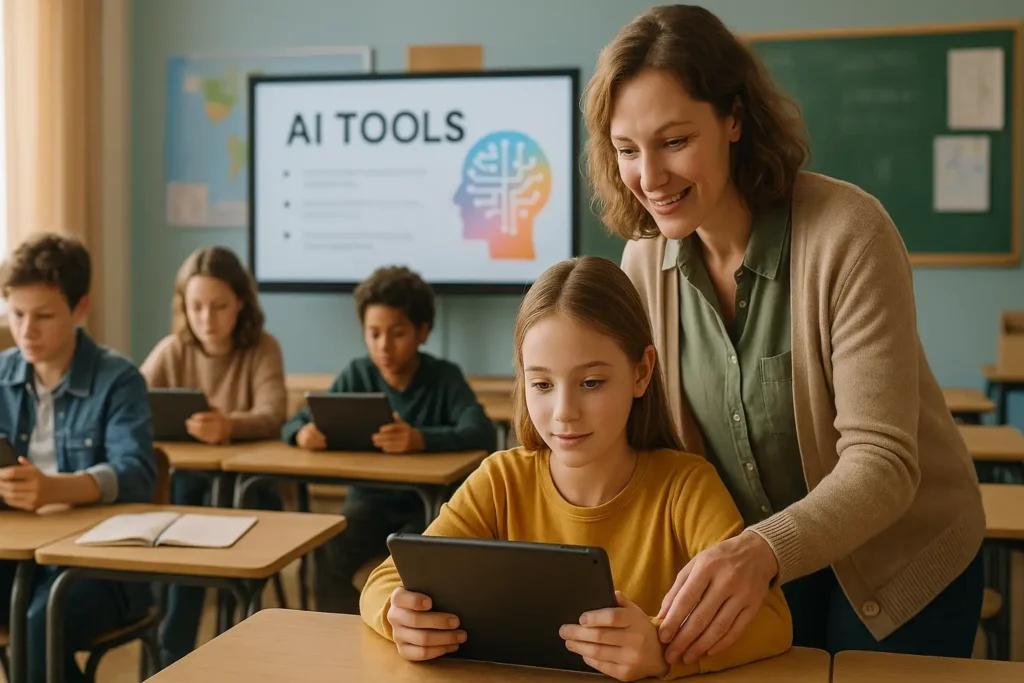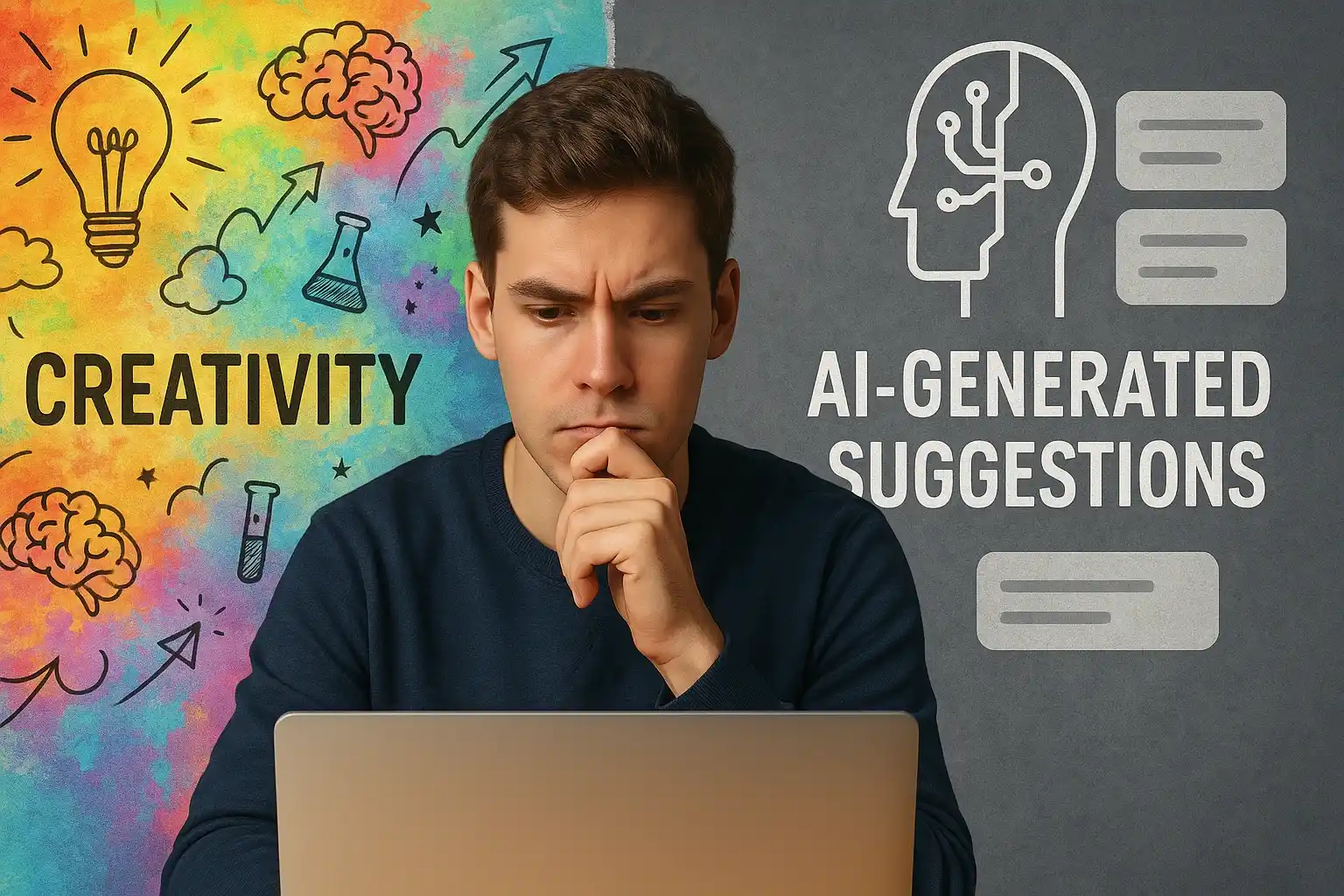The pros and cons of AI in education for students is a topic that raises both excitement and concern. As teachers, parents, or anyone involved in education, we often ask ourselves: Is Artificial Intelligence really helping our students learn better? Or is it getting in the way of their creativity and thinking skills?
Let’s sit down and chat about this. Imagine we’re having coffee, and you asked me what I think about using AI in the classroom. I’ll explain everything in a way that’s simple and easy, without complicated words. I’ll also give practical examples you can relate to from daily school life.
Why It’s Important to Discuss the Pros and Cons of AI in Education for Students
Before we fully embrace artificial intelligence in schools, we need to take a step back and look at both sides of the story. The pros and cons of AI in education for students are not just theoretical—they affect how students think, learn, and grow every day in the classroom.
Yes, AI offers exciting possibilities: personalized learning, faster feedback, and greater inclusion. But at the same time, we must ask critical questions. Are students losing valuable skills because machines are doing the work for them? Is AI helping or harming their ability to think creatively and connect with others?
Understanding the pros and cons of AI in education for students helps educators, parents, and decision-makers make smarter choices. Below is a simple table that summarizes the main points we’ll explore in this article.
| Pros | Cons |
|---|---|
| Personalized learning tailored to student needs | Risk of overdependence on technology |
| Immediate feedback and faster learning cycles | Reduced critical thinking and problem-solving skills |
| Helps include students with special learning needs | Potential decline in creativity due to automated tools |
| Increases motivation with gamified learning | Less face-to-face interaction and emotional connection |
| Saves teachers time on repetitive tasks | Privacy concerns over student data collection and usage |
What Are the Main Advantages of Using AI Tools to Support Student Learning?
AI tools are becoming more and more common in schools. You might have already used apps that help students read better, websites that solve math problems, or even platforms that give personalized feedback. But what are the real benefits?
1. Personalized Learning
AI can adjust the content based on each student’s level and pace. For example:
- If a student is struggling with fractions, an AI math app can offer more exercises just on that topic.
- On the other hand, if someone is advanced in reading, the app might give more challenging texts to keep them interested.
This kind of individual attention helps students feel more confident because they get exactly what they need to improve.
2. Instant Feedback
Gone are the days of waiting a week for a graded test. AI can give immediate feedback:
- After a quiz, students see what they got right or wrong right away.
- This helps them correct mistakes quickly and learn faster.
For teachers, this is a huge time-saver!
3. Accessibility and Inclusion
AI also helps students with different learning needs:
- Text-to-speech tools can read texts out loud for students with reading difficulties.
- Translation tools can help non-native speakers understand classroom materials.
So everyone gets a fair chance to learn, no matter their background.
4. Motivation and Engagement
AI tools often include games, interactive lessons, and even virtual tutors.
- This makes learning more fun and keeps students engaged.
- When students are excited, they learn better—simple as that!
👉 Discover how teachers are adapting to AI in education with simple tools, real stories, and practical strategies for the classroom.
How Might AI Negatively Impact Students’ Critical Thinking or Creativity?
Now, let’s talk about the downsides. Like anything in life, too much of a good thing can cause problems.
1. Overdependence on Technology
When students use AI to do everything, they might stop thinking for themselves.
- For example, if a writing tool corrects every sentence, will the student learn proper grammar?
- If AI writes an entire essay, how will the student learn to organize their thoughts?
That’s why balance is key.
2. Reduced Creativity
AI tools often follow patterns. They can help organize ideas, but they might also limit creative thinking.
- Imagine a student who always uses an AI tool to draw. Will they ever try to sketch something on their own?
- Or a student who lets AI choose words in a poem—will they discover their own writing style?
It’s important that AI supports, not replaces, the creative process.
3. Privacy and Data Concerns
Many AI tools collect information about students:
- What they click, how fast they answer, and what topics they struggle with.
- This data is useful but can also be misused if schools aren’t careful.
Teachers and schools need to choose tools that respect privacy and follow regulations like the LGPD (in Brazil) or GDPR (in Europe).
4. Lack of Human Connection
Learning is not just about getting answers. It’s also about talking, sharing, and connecting with others.
- AI doesn’t replace the warm smile of a teacher or the encouragement from a classmate.
- Human interaction builds confidence, empathy, and teamwork—skills no machine can teach.

In What Ways Can Schools Balance the Benefits of AI With the Need for Human Interaction in Education?
We’ve seen the good and the not-so-good. Now, how can schools get the best of both worlds?
1. Use AI as a Support Tool, Not a Replacement
Teachers should use AI to help with repetitive tasks—like grading or tracking progress—but still lead the classroom.
- Let AI check spelling, while the teacher discusses the story’s meaning.
- Use AI for practice quizzes, but make space for real discussions afterward.
2. Encourage Creativity and Critical Thinking
Schools can:
- Give assignments that require students to explain their thinking.
- Ask open-ended questions that AI can’t answer.
- Allow group work, where students debate and learn from each other.
That way, students don’t just get answers—they learn how to think.
3. Choose the Right Tools
Not all AI platforms are the same. Schools should pick tools that:
- Are easy to use for both teachers and students.
- Offer meaningful insights instead of just giving grades.
- Protect student data and are transparent about how they use it.
4. Train Teachers and Students
Understanding how to use AI wisely is crucial:
- Offer workshops for teachers on how to integrate AI into lessons.
- Teach students to use AI responsibly, as a helper—not a crutch.
In this way, everyone becomes more prepared for the future, without losing the essence of learning.
Key Points About Pros and Cons of AI in Education for Students
- AI can personalize learning and give immediate feedback.
- It helps include students with different needs and makes learning more fun.
- But it may reduce creativity, critical thinking, and face-to-face interaction.
- Data privacy is a serious concern with AI tools.
- Schools should balance tech and human touch, and train both teachers and students.
Conclusion
AI is not going away. In fact, it’s only going to grow. But that doesn’t mean we should accept it blindly. Like any tool, it depends on how we use it. In education, AI can be a fantastic ally—if we remember that the heart of learning is still human.
By making thoughtful choices, encouraging creativity, and maintaining meaningful relationships in the classroom, we can enjoy the benefits of AI without losing what makes education truly powerful: connection, empathy, and curiosity.
What do you think about using AI with your students? Leave a comment and let’s talk!


Insightful post! Like any technology, AI in education brings both exciting opportunities and important challenges. While it enhances personalized learning, improves access, and streamlines administrative tasks, it’s also essential to address concerns around data privacy, over-reliance on technology, and the need for human guidance. Striking the right balance will ensure students benefit from AI while still fostering critical thinking and creativity.
For more discussions on AI’s impact in education and other sectors, feel free to visit AMR Tech Insights.